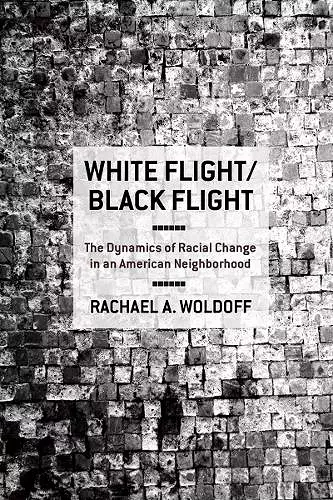White Flight/Black Flight
The Dynamics of Racial Change in an American Neighborhood
Format:Paperback
Publisher:Cornell University Press
Published:15th Apr '11
Currently unavailable, and unfortunately no date known when it will be back
This paperback is available in another edition too:
- Hardback£108.00(9780801449185)

Urban residential integration is often fleeting—a brief snapshot that belies a complex process of racial turnover in many U.S. cities. White Flight/Black Flight takes readers inside a neighborhood that has shifted rapidly and dramatically in race composition over the last two decades. The book presents a portrait of a working-class neighborhood in the aftermath of white flight, illustrating cultural clashes that accompany racial change as well as common values that transcend race, from the perspectives of three groups: white stayers, black pioneers, and "second-wave" blacks.
Rachael A. Woldoff offers a fresh look at race and neighborhoods by documenting a two-stage process of neighborhood transition and focusing on the perspectives of two understudied groups: newly arriving black residents and whites who have stayed in the neighborhood. Woldoff describes the period of transition when white residents still remain, though in diminishing numbers, and a second, less discussed stage of racial change: black flight. She reveals what happens after white flight is complete: "Pioneer" blacks flee to other neighborhoods or else adjust to their new segregated residential environment by coping with the loss of relationships with their longer-term white neighbors, signs of community decline, and conflicts with the incoming second wave of black neighbors. Readers will find several surprising and compelling twists to the white flight story related to positive relations between elderly stayers and the striving pioneers, conflict among black residents, and differences in cultural understandings of what constitutes crime and disorder.
White Flight/Black Flight is a book worth reading—Rachael A. Woldoff puts the flesh on what are often our dry demographic discussions of population change in American urban neighborhoods. The book is considered, thoughtful, and provides a nuanced ethnographic interpretation of the decision about whether to stay or move when a neighborhood changes.... The strength of the book is in the stories of people who observed the transitions in their neighborhood as it changed its ethnic composition. Their stories are the stories of people dealing with the day-to-day interactions of living in changing neighborhoods.
-- William A. V. Clark * American Journal of Sociology *Much has been written about neighborhood change and the process of white flight from urban and suburban neighborhoods. However, the white flight literature only documents a small part of a much wider process of neighborhood change. In White Flight/Black Flight the author makes attempts to redress the balance through an ethnographic exploration of longer-term change in one neighborhood. Woldoff demonstrates how initial neighborhood change as a result of a changing ethnic structure is only a small part of the story and that neighborhood transition is as much an outcome of class, income, and values as it is about race or ethnicity. Ultimately, what this book reminds us is that neighborhoods, far from being static entities that only change in response to large dramatic shocks, are actually entities in constant flux responding constantly to a barrage of small changes.... What this book demonstrates is that, while the study of neighborhood change in the United States has focused on white flight, the ethnographic study in Parkmont shows that class divisions and class flight are just as important. A broader approach such as Woldoff's is needed to reach a better understanding of how a neighborhood changes and how residents cope with that change.
* Urban Studies *Rachael A. Woldoff tells Parkmont's seemingly common story in an uncommon way. Rather than focusing on racial change, Woldoff explores what comes next, as a few white residents who chose to stay ('stayers'), black pioneers, and African Americans who arrived later ('second wavers') formed a complex social system. In focusing on 'the cultural and social dynamics that occur in the aftermath of white residents leaving,' Woldoff sheds new light on contemporary urban communities and opens new fields of investigation.... Woldoff's close attention to interracial and intraracial relationships after Parkmont became a black community is White Flight/Black Flight's greatest strength.... It is a fine study that opens new questions for scholarly investigation.
-- James Wolfinger * Journal of American History *Sociologist Rachael A. Woldoff has crafted a clever topic in her study of the impact of racial change in Parkmont, an unidentitfied U.S. Northeast neighborhood.White Flight/ Black Flight: The Dynamics of Racial Change in an American Neighborhoodasks what happens to a residential area after moderately prosperous African Americans, the pioneers, move into a majority white area seeking a better community life and integrated living, and are later followed by lower-class African Americans, the second wavers.. Woldoff's extensive use of the secondary literature should help expand our understanding of 'gentrification' beyond the simple black-white dichotomy.
-- Keith A. Dye * The Journal of African American Histo- Winner of Winner of the 2012 Best Book in Urban Affairs Awar.
ISBN: 9780801477287
Dimensions: 235mm x 155mm x 16mm
Weight: 454g
264 pages